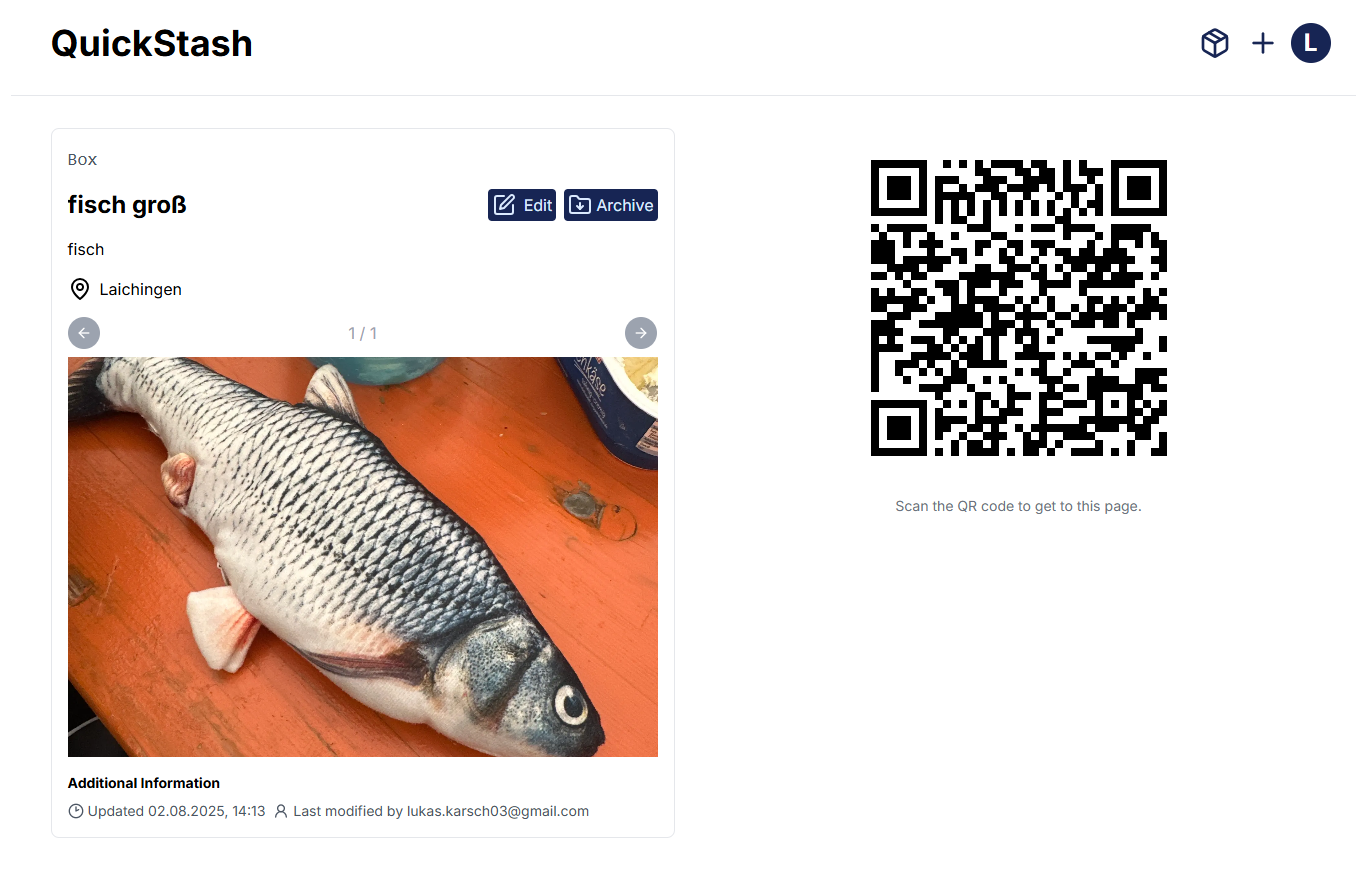QuickStash – From Summer Camp Chaos to My First Next.js Project
QuickStash started as a very specific problem: our summer camp has a lot of storage, but no one ever remembers what’s inside which box. Every year the same story: we search, we unpack (more boxes than needed), we repack (nobody remembers what we put where), we waste time. I wanted a simple way to keep track of everything.
The idea
- Create boxes in the app
- Add contents (with photos)
- Print a QR code linking directly to that box
- Stick it on the box
Scan, find, done.

Current state of the app: complete with photo upload, version history, metadata and QR code - scan it if you want to try!
Of course, building the tool was the easy part (not really, but you get the point). The real challenge? Users. An app can only help if people actually update it. If someone doesn’t clean up, doesn’t change contents, or just ignores the system, QuickStash can’t work its magic. That’s the biggest lesson: no tool replaces discipline.
Still, the project was a huge win for me personally. QuickStash was my first real Next.js project. I learned about routing, server-side rendering, API routes, and deployment. Most importantly, I learned how real user feedback changes everything. My first version looked good on paper, but in practice? Not great. People struggled with navigation, adding photos felt clunky, and printing QR codes wasn’t as obvious as I thought.
So I iterated. Again and again. Every round of feedback made the app better: cleaner UI, fewer clicks, more obvious flows. Nothing teaches you usability like watching people fail at the thing you thought was obvious.
Learnings
- Building the tech is rarely the hardest part. People are.
- Iteration is everything. Your first design is never the right one.
- Feedback hurts, but it’s the fastest way to grow.
- A “small project” can teach you a whole framework if you commit.
QuickStash isn’t perfect, but it works. And with this year being the second year of usage, I realized how more of the team adopted its usage. Cleaning up after the camp actually got easier and we all left with the good feeling that we will probably find our stuff easier next year!
Sounds interesting?
If this sounds interesting for you or your team: give it a try!